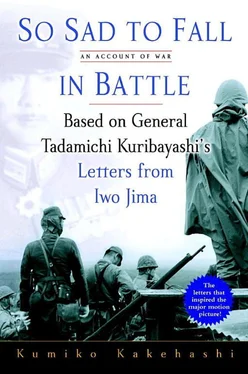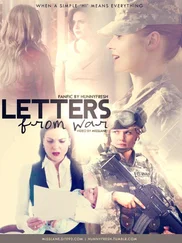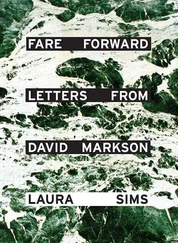The Americans landed on the south beach, then, while one group advanced to the left to take Mount Suribachi, other units headed right, pushing up to the northeast. The Japanese forces ranged against them fought back from defenses they had built in three tiers: the first line of defense; the second line of defense; and then the honeycomb defense. They cleverly exploited the uneven ground and their underground positions to conceal their guns, while the artillerymen were also waiting for the enemy underground.
Motoyama Airfield, in the center of the island, was the prize the Americans most wanted to capture. The Japanese first and second lines of defense were placed on either side of this airfield, above and below it. The marines’ Fourth and Fifth Divisions, which pushed toward Motoyama Airfield, encountered stiff resistance from the Japanese and suffered many casualties. This inspired the Americans to send in the reserved Third Division on February 24, the day after the capture of Mount Suribachi. The total manpower committed by the Americans now rose to around sixty-one thousand men—three full marine divisions—and for the next four days the battle in the area around Motoyama Airfield became very intense.
The Americans chose to make a frontal assault based on brute strength.
They advanced northward, tanks out in front and artillery units blasting round after round from their rocket guns. The infantry followed, using flamethrowers, hand grenades, and high explosives to wipe out the pillboxes and underground bunkers one by one. Rear Admiral Rinosuke Ichimaru summed up the situation in a Senkun Denpô —literally a “war lesson telegram”—he sent to the Imperial General Headquarters. “The Americans only advance after making a desert out of everything before them. Their infantry advance at a speed of about ten meters an hour. They fight with a mentality as though exterminating insects.”
The Japanese forces fired from cleverly concealed gun ports, as well as raining down concentrated fire from mortars and rocket guns. When the firepower of the Americans became simply too overwhelming, they would slip down into their underground installations and go through one of the tunnels that headed off any which way, then resume the attack from some unexpected point. The different units could coordinate by keeping in contact via a telephone system that ran through the tunnels.
This was the style of fighting Kuribayashi had envisaged and prepared for over the previous eight months.
The underground bunkers and tunnels the soldiers had sweated so hard to construct gave them a standby location before making a sortie, and a place to take refuge from enemy gunfire. They also served as their living quarters, offering shelter from the airstrikes that went on throughout the battle, as well as providing storage space for food and ammunition. The soldiers must have recognized that this was the only way they could fight on such a small island against an enemy so superior in numbers, firepower, and equipment.
Admiral Nimitz acknowledged that Kuribayashi had turned Iwo Jima into “the most impregnable eight-square-mile island base in the Pacific.” “The only thing we could do,” he stated, “was to use infantry units supported by tanks to get in and capture one by one the bases the Japanese had so ingeniously constructed.”
The Japanese soldiers would also sprint out of their caves clutching armor-piercing charges (bombs capable of destroying the armor-plating of tanks) and blow up tanks by flinging themselves against them. These close-quarters attacks on tanks traditionally involved throwing explosive charges into the tank’s caterpillar tracks and then withdrawing, but when it came to real combat many soldiers summoned up the courage to ram themselves bodily against the tanks, which was much more effective. It goes without saying that they were blown to pieces when the charge went off. They were doing on land what the Kamikaze Special Attack Force was doing in the air.
Summing up what was unique about the extraordinary close-quarters battle between underground and aboveground waged by Kuribayashi, Lieutenant General Smith declared in Coral and Brass that: “Every cave, every pillbox, every bunker was an individual battle, where Japanese and Marine fought hand to hand to the death.”
The Japanese put up a desperate fight, but lost Motoyama Airfield by February 26, after the Americans sent in reinforcements and blanketed the area with devastating artillery barrages. By the evening of February 27, Japanese troop strength had been cut by half, while guns and ammunition had shrunk by two thirds. The ammunition situation for field guns and mid-size trench mortars was especially dire, with only 10 percent of the original stock remaining.
The Japanese were now no longer able to respond in kind to American firepower. Henceforth they could not expect to fight in a manner that resembled any conventional idea of what a battle should be; from then on, the battle would be one of bloodshed and endurance more painful than death itself. Nor would Kuribayashi allow his men to use death as a quick way out.
“Yours not to die a noble and heroic death; yours to live the most excruciating life”—that was the role that Kuribayashi, commander in chief on this grimmest of battlegrounds, ordered his soldiers to perform.
ÔKOSHI HARUNORI WAS a Japanese soldier who was wounded on Iwo Jima and became a prisoner of war. He passed through prison camps in San Francisco, Chicago, and Hawaii before being repatriated in January 1947. As a navy special junior soldier, Ôkoshi was still only seventeen years old when he fought on Iwo Jima. He was among the youngest POWs in the camps, but when it came out that he was an “Iwo Jima soldier,” the guards would always treat him slightly differently. Says Ôkoshi: “One of the American soldiers told me that ‘Kamikaze soldiers’ and ‘Iwo Jima soldiers’ were special.”
Ishii Shûji, another prisoner of war, recalled an experience he had in the POW camp in San Francisco.
One day, one of the guards asked me: “So where were you captured?”
“Iwo Jima,” I replied.
The guard started, went pale, and adjusted his grip on his weapon. That gave all of us quite a surprise, too.
In the camps, the Japanese soldiers who had been captured on Iwo Jima were regarded with a mixture of fear and respect. The Americans all knew how fiercely they had fought.
There was nothing special about the garrison that defended Iwo Jima in terms of age, physical strength, and combat experience. The marines were a combination of veteran officers and physically strong volunteers with high morale, but the Japanese forces included many conscripts. The only proper cohesive fighting units were the 145th Infantry Regiment and the 26th Tank Regiment; otherwise the garrison was made up of independent infantry and artillery battalions and auxiliary units.
But even while they expended huge amounts of physical energy in building defensive positions, the pace of training never slackened, so that the soldiers were able to improve their fighting skills. It was probably their desire to defend Iwo Jima, a part of Japan itself, and to stave off air raids and the invasion of the homeland that more than anything else transformed them into such a crack force.
Kuribayashi gave extremely practical directions regarding training. I will quote the “Battle Directions for the Soldiers of Courage Division” in its entirety. (“Courage” was a single Japanese ideogram that served as a sort of code name for the Division.) These directions were devised and distributed by Kuribayashi.
Preparations for battle
1. Use every moment you have, whether during air raids or during battle, to build strong positions that enable you to smash the enemy at a ratio of ten to one.
Читать дальше












